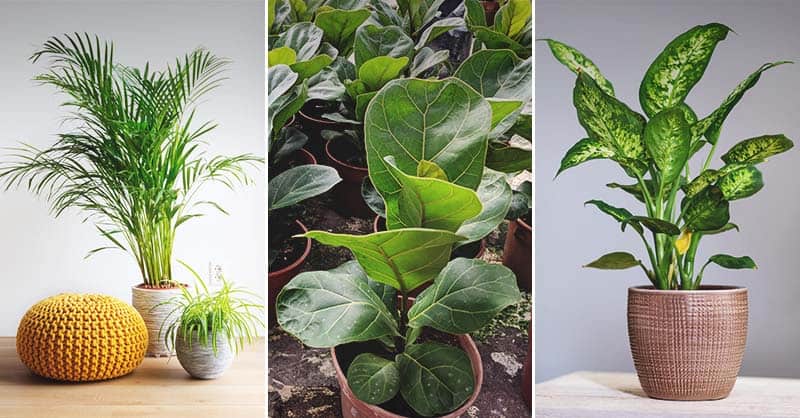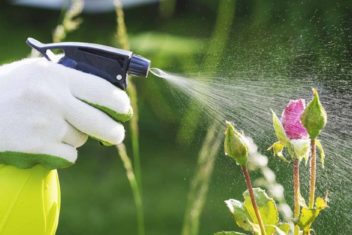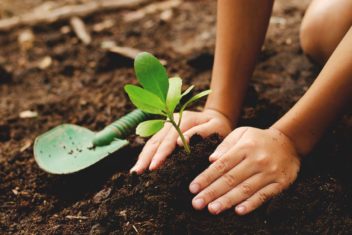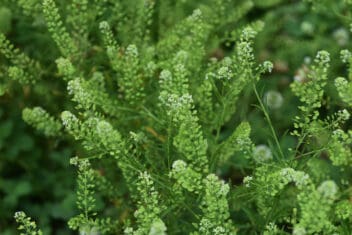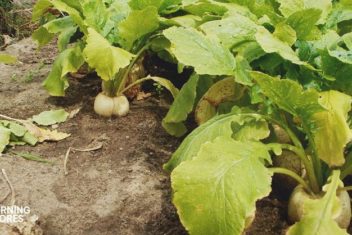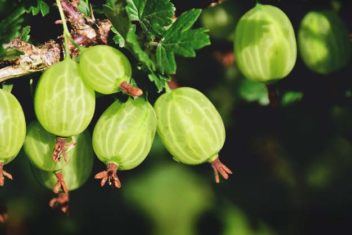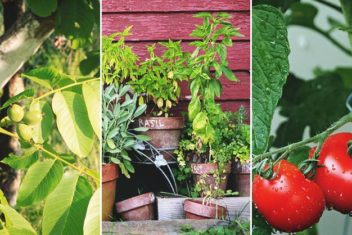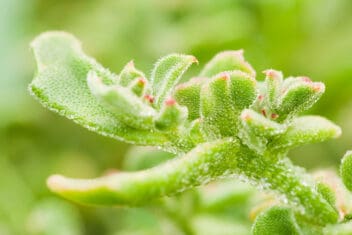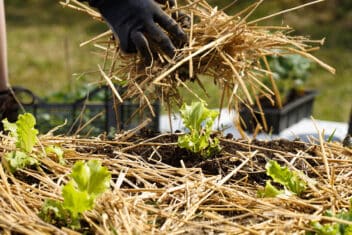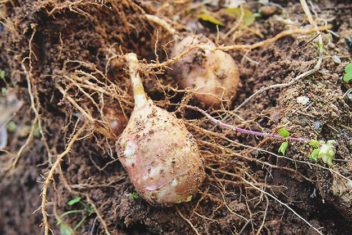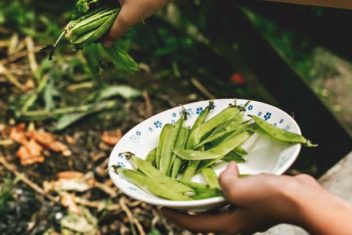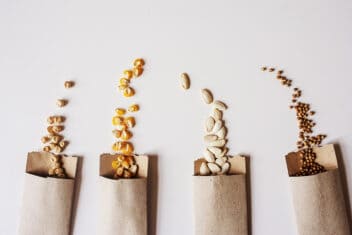Get in touch with nature – even when you’re in the house! Indoor trees can make your home feel connected to the outdoors without all the bugs, rain, and dirt. Not only do living trees look phenomenal but they smell fresh and add greenery to your life even when everything outside is dormant.
Many studies have indicated that indoor trees and other houseplants reduce stress and can help with depression. In addition, some species work to purify the air and make our homes healthier.
There are many types of trees that thrive indoors. They add a structural element to your décor and can make the room feel more open. Trees can even anchor a space better than a large piece of furniture because they are organic and open instead of heavy and solid.
Don’t feel limited to tropical trees, although they’ll love your indoor conditions. There are many native species that will do well inside your home as well.
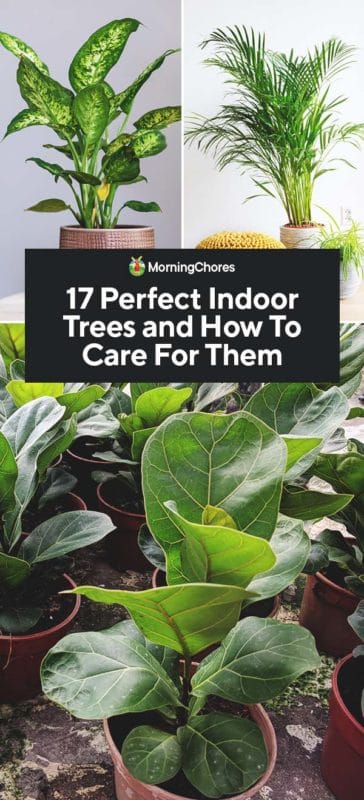
Light and Water
There are two big factors you need to consider when growing trees indoors. Just like any other houseplant, trees have specific light and water needs. Make sure you check out what they need before you decide where to put them.
You can supplement sunlight with a grow light if you don’t have the perfect place indoors. You can also move plants around to take advantage of the best light.
Remember water is important BUT, be careful not to overwater your trees. That’s actually more harmful then forgetting to water. Moist, but not wet, soil is best for most trees. Let them dry out in between watering and make sure they have nice deep pots with good drainage.
1. Areca Palm (Chrysalidocarpus lutescens)

This palm is a fast grower and can grow six inches a year till it reaches its full height of seven feet. The downside is you’ll need to re-pot it every other year. The fine leaves give it a feathery look.
The areca palm is a bit more high maintenance and can be picky about its location. It’s ok to move it around till you find a spot where it does well. Fertilize once in spring with an organic fertilizer that contains both macro and micronutrients.
- Light: bright direct light from a south- or west-facing window.
- Water: Give it constant moisture in spring and summer to keep moist. However, once winter comes, let it dry out in between watering.
2. Banana Tree (Musa spp.)
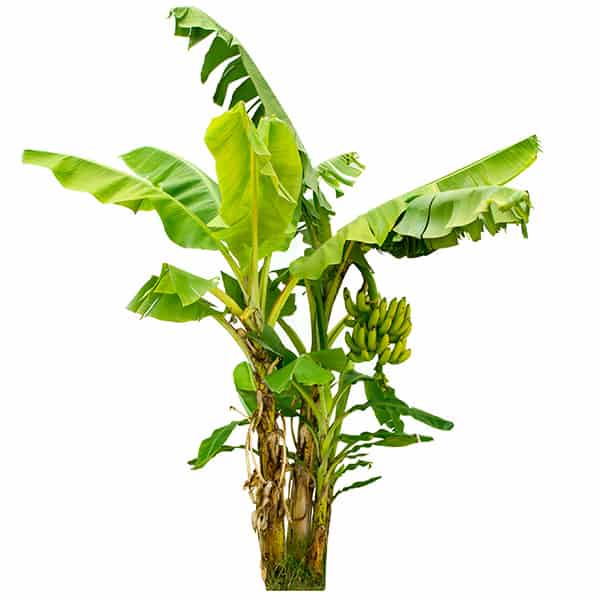
There are many species of the banana trees, many of which will grow fruit indoors. Look for Cavendish, which is a dwarf variety. Keep in mind that even the “dwarf” varieties may grow to 10 feet tall. They’ll tolerate pruning, so you can keep them at the height you want.
Fast-growing bananas benefit from monthly fertilizing. The soil should have plenty of humus. Put an organic mulch on top to retain moisture. Banana trees are prone to mites, so keep your eyes open.
- Light: these need bright light, ideally in front of a south-facing window or in a sunroom. Needs at least six hours of sun per day if you want to get fruit.
- Water: Needs regular watering of one inch per week. It appreciates humidity and regular misting.
3. Calamondin Orange Tree (Citrus mitis)
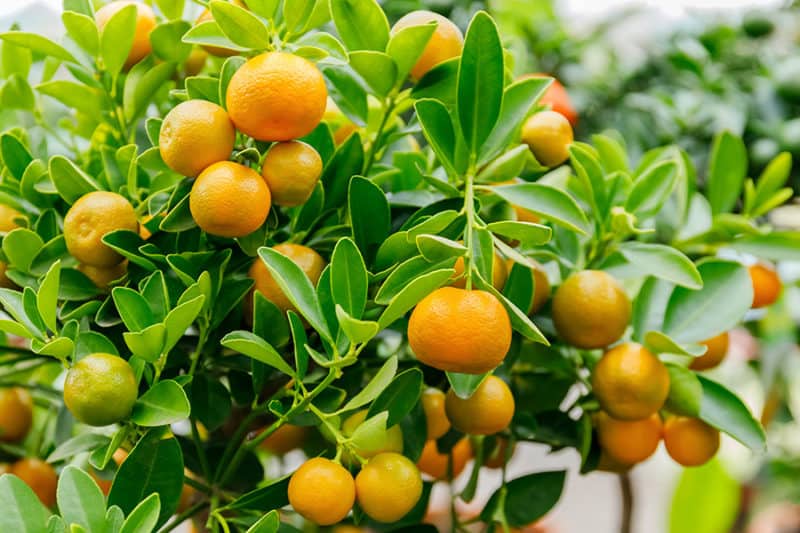
Actually a cross between a kumquat and an orange, this little tree thrives on being indoors and will produce numerous fruits. The fruits are a bit on the sour side and are great for squeezing into drinks and making homemade marmalade.
They produce the most fragrant small white flowers that will make your room smell like a Florida orchard. Growing in a clay pot is recommended because the roots like air circulation. Keep them in a smaller pot because the roots like to be together.
- Light: requires bright light. Like the banana, it needs at least six hours per day to fruit well.
- Water: let dry out well in between watering.
4. Corn Plant (Dracaena fragrans)
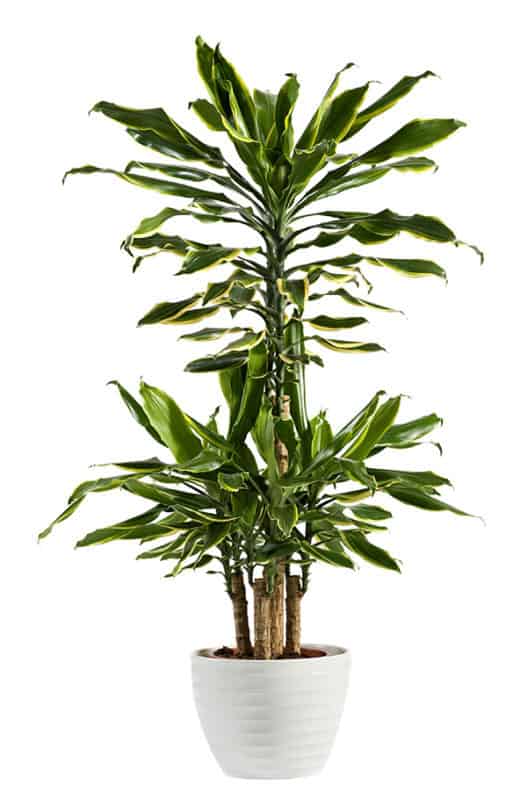
This one reminds me of my mother who always had several that almost reached the ceiling. They can easily grow to six feet and look majestic.
The corn plant enjoys a spot on the warm side with temperatures staying above 65°F. Fertilize in spring and fall for the best results.
- Light: indirect light is best. In my experience they like bathrooms.
- Water: keep the plant moist but never wet as it’s prone to root rot.
5. Dumb Cane (Dieffenbachia)
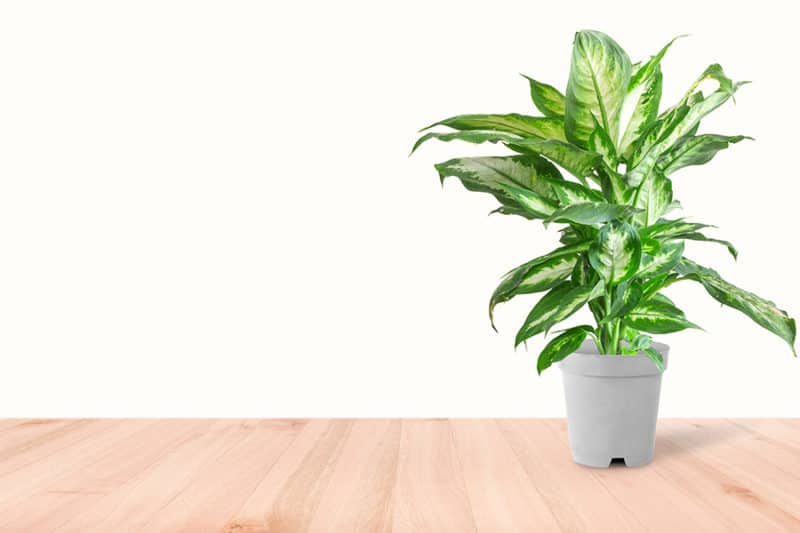
The lush, variegated leaves of this plant make any home seem like a jungle. This hardy fast-growing tree will reach five feet tall and is easy to propagate from cuttings. Just chop off the thick stem and put the leaf in water until you see roots growing. Then replant it in a new pot with well-draining soil.
Likes well-draining soil so add some gravel at the bottom of the pot. If the bottom leaves turn brown just trim them off. Avoid planting dumbcane around pets or children as the leaves are toxic.
- Light: filtered light is best, try it in front of a window with a sheer curtain covering.
- Water: care should be taken not to overwater. Keep slightly damp but not soggy.
6. Dwarf Alberta Spruce (Picea glauca)

This fabulous little evergreen does well in containers. It grows slowly so you don’t have to worry about transplanting often. Because of its slow growth, it makes an ideal bonsai option. Watch out for spider mites.
- Light: bright sunlight, such as in front of a window or glass patio doors, is necessary.
- Water: water thoroughly when the top two inches are dry.
7. Fiddle Leaf Fig (Ficus lyrata)
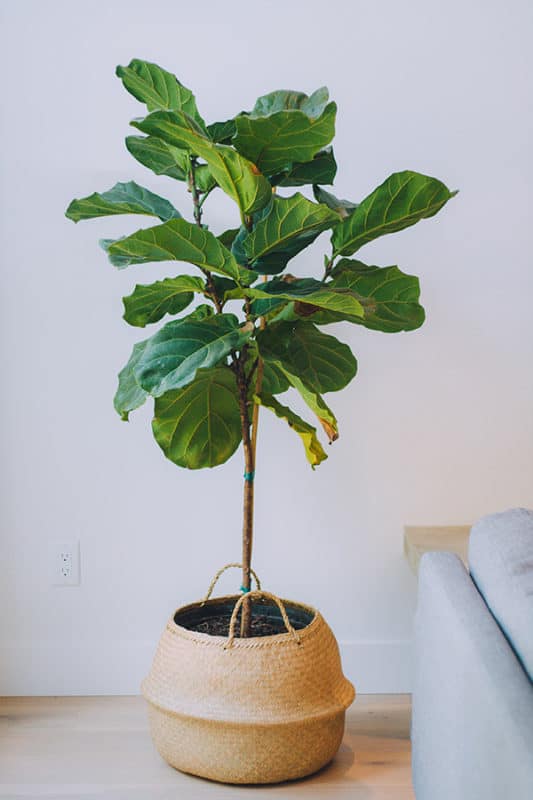
This beautiful plant is the latest rage and rightly so. The broad glossy, textured leaves resemble the shape of a fiddle. It looks great as the focal point of any room.
Plant it in well-draining potting soil with some rocks at the bottom. Your fiddle leaf fig can live for fifty years, so treat it with respect. Bathrooms are a great place for this tree.
- Light: bright but indirect, an east-facing window is good. It is an understory plant, so keep away from southern exposure.
- Water: give it a good drenching in summer and then let it dry out between watering. Let it go dry in winter and only moisten the soil. This plant originates from West Africa, so it wants a rainy and dry season.
8. Madagascar Dragon Tree (Dracaena marginata)
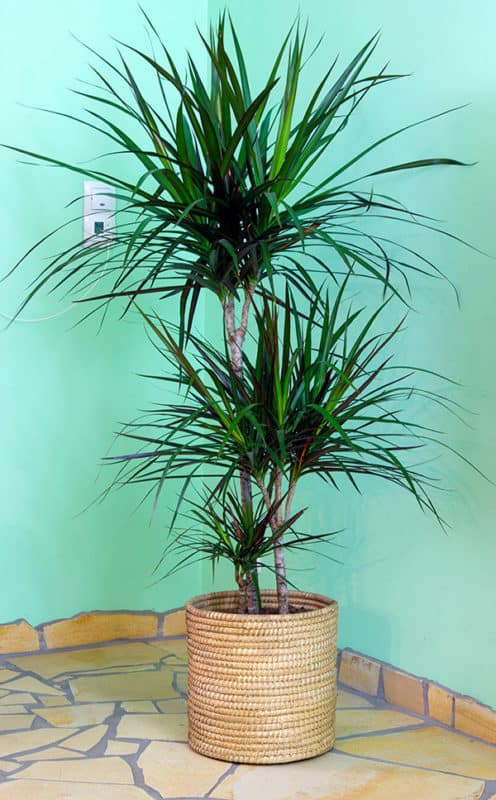
The slim leaves of this plant have a dark red color along the outer edge which gives the appearance of a tongue. Hardy and easy to care for, the dragon tree can reach eight feet tall in 10 short years. Use caution if you have pets as the dragon tree is toxic to both cats and dogs.
- Light: indirect light.
- Water: likes infrequent watering, so allow to dry out between watering.
9. Norfolk Island Pine (Araucaria Heterophylla)
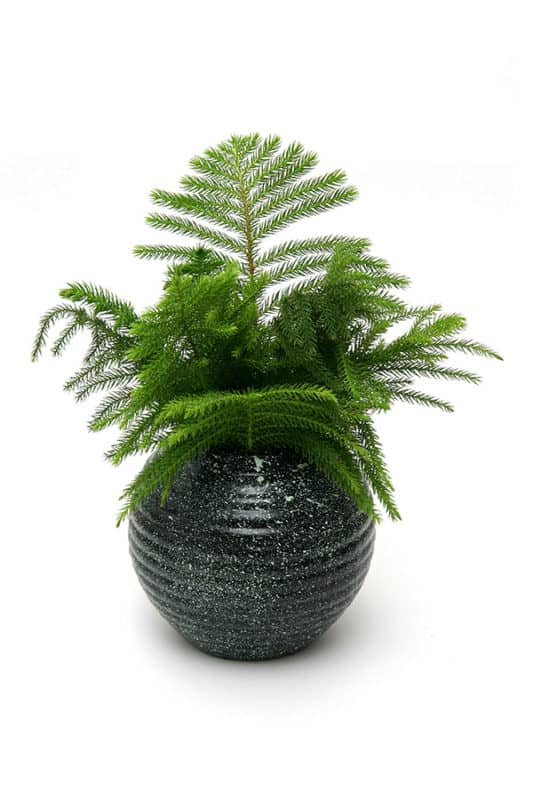
Grow a Norfolk pine and you can have a Christmas tree inside all year long. It’s a delicate plant with soft needles. It likes slightly acid soil, so add some coffee grounds or cottonseed meal to your potting mix.
Not a true pine, the Norfolk is descended from the early conifers of the Jurassic period. Slow growing and – unlike many evergreens is tropical – so it can’t tolerate cool temps.
- Light: direct, bright light
- Water: keep moist but don’t overwater, which can cause it to drop leaves. Appreciates occasional misting.
10. Ponytail Palm (Beaucarnea recurvata)
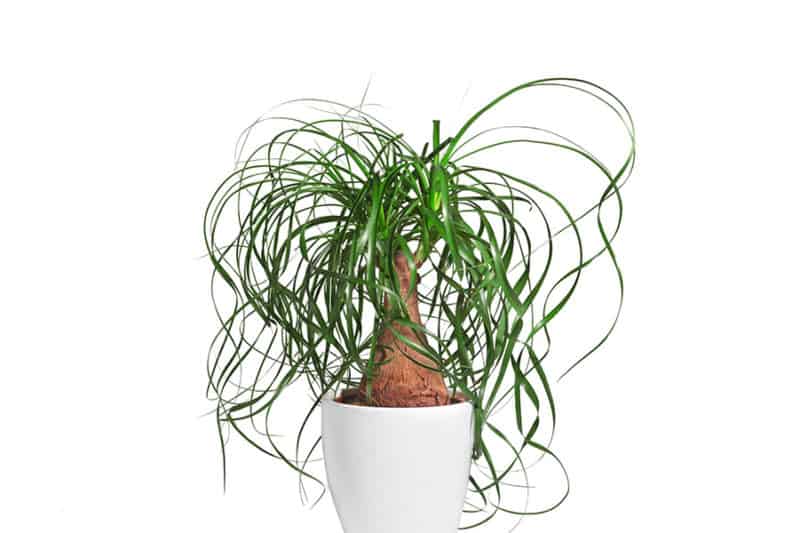
This is the perfect plant if you tend to forget watering. The ponytail palm thrives on dry conditions and neglect. It’s a slow grower so be patient.
- Light: indirect but bright light.
- Water: light watering, let dry out in between.
11. Rubber Tree (Ficus elastica)
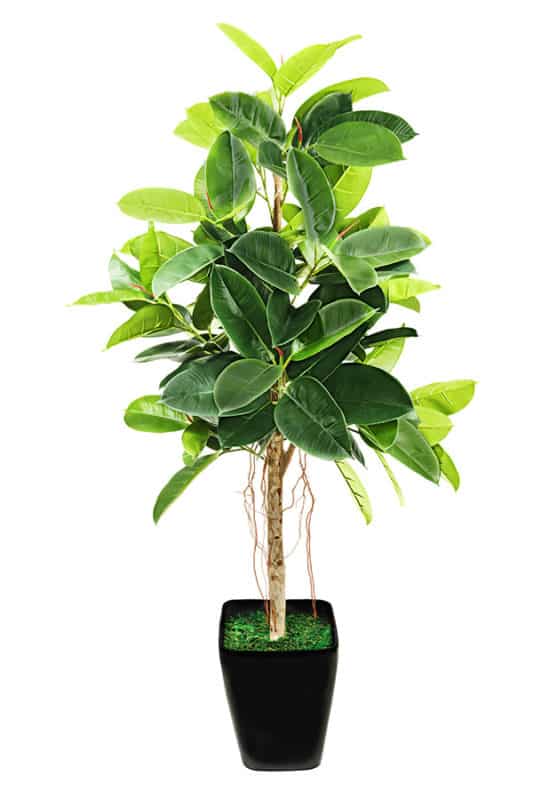
The large wide leaves of this tree are a gorgeous reddish-bronze color. Easy to grow and hardy, it does have sticky sap, so wear gloves when you prune or repot.
Native to India, the rubber tree likes humidity and good air circulation. Tolerates a cooler spot. Use a damp cloth to occasionally wipe dust from the leaves. Likes monthly fertilization with a water-soluble organic plant fertilizer.
- Light: Bright, filtered light.
- Water: Keep soil nice and moist, but not wet.
12. Umbrella Plant (Schefflera arboricola)
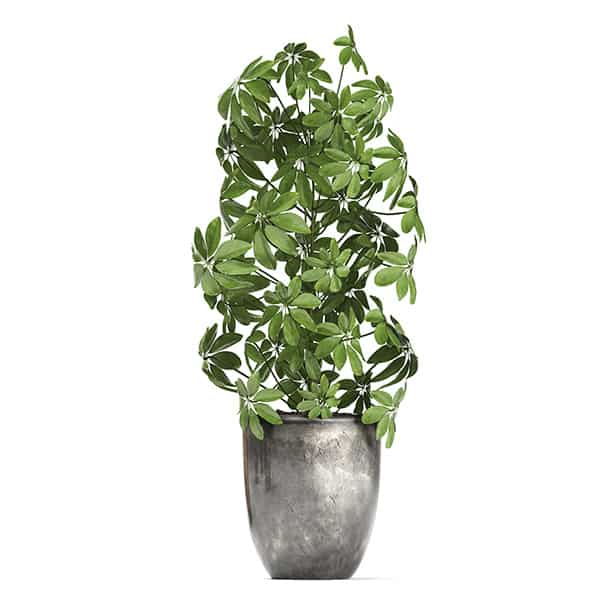
This was another of my mother’s favorite indoor trees. It really does resemble small umbrellas. I remember getting in trouble for sticking my barbie dolls in the dirt under it and pretending they were in the jungle.
The umbrella plant can reach eight feet tall under the proper conditions. Put it in front of a southern or western facing window.
- Light: bright filtered light.
- Water: make sure it dries out thoroughly in between waterings.
13. Weeping Fig (Ficus benjamina)
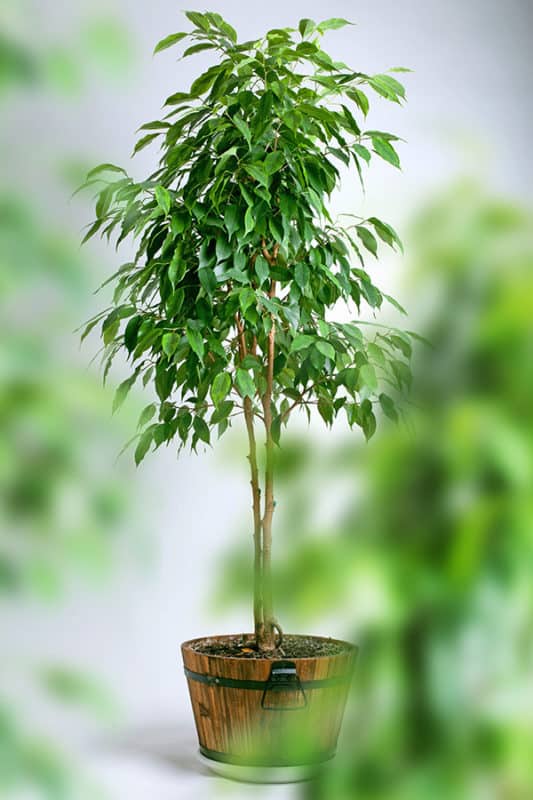
This poor tree is often blamed for giving indoor trees a bad rap. All it needs is some TLC in the right spot. Keep away from doors and heating vents in a room with even temps.
It does shed leaves in winter, so have it in a broad container. If it starts to drop more than 20%t of its leaves it is most likely because it has had a change in climate. Weeping fig likes consistency and is bothered by changes in temperature or light.
If you place you Fig outside during the summer make sure the nighttime temperatures are above 55°F first.
- Light: tolerates low light, but prefers diffused light from a nearby window.
- Water: Don’t water until the top two or three inches of the soil ball feels dry to the touch. Then water generously until a small amount of excess water drains from the pot. Then let it dry out thoroughly again.
14. Yucca (Yucca elephantipes)
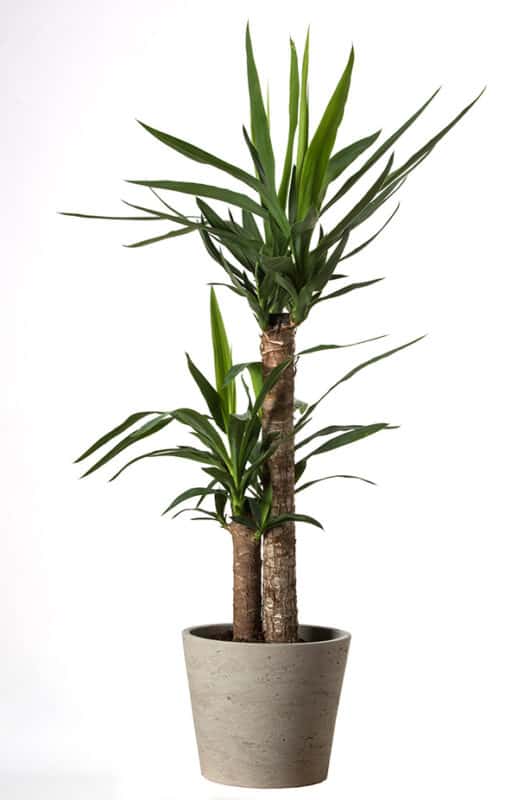
Sharp, interesting leaves make this indoor tree a great focal point in front of a window. This fabulous spiky desert plant thrives on benign neglect because it’s drought tolerant. Your potting mix should be one-third potting soil, one-third sand, and one-third peat so that it drains well.
- Light: next to a sunny window for indirect light.
- Water: it can handle infrequent watering and is drought tolerant.
15. Candleabra Cactus (Euphorbia ingens)
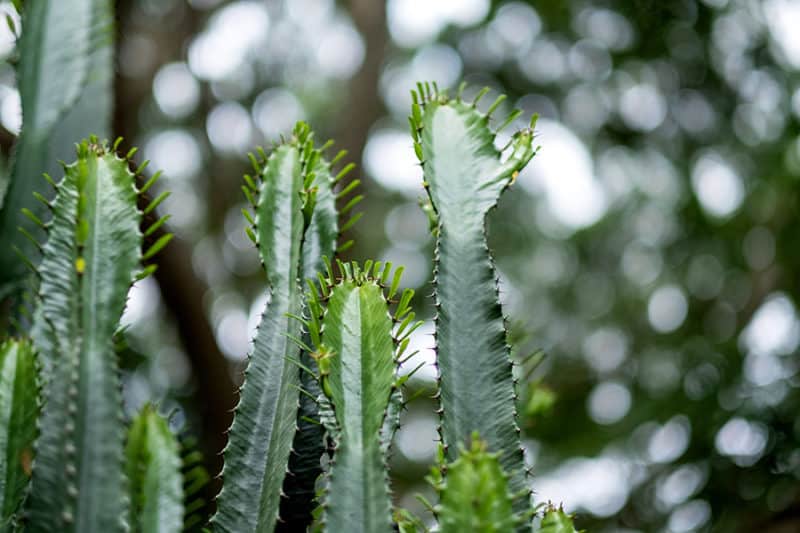
This plant, also known as cowboy cactus, is technically not a tree, but it can get huge and happily grows indoors. Potted, it gets about 6-feet tall and adds drama to any room. It can even flower with lovely red blossoms.
Keep in mind that the milky sap can irritate your skin and is toxic to pets.
- Light: bright sunlight.
- Water: it only needs a little water, even less in the winter. Water when totally dry.
16. Money Tree (Pachira aquatica)
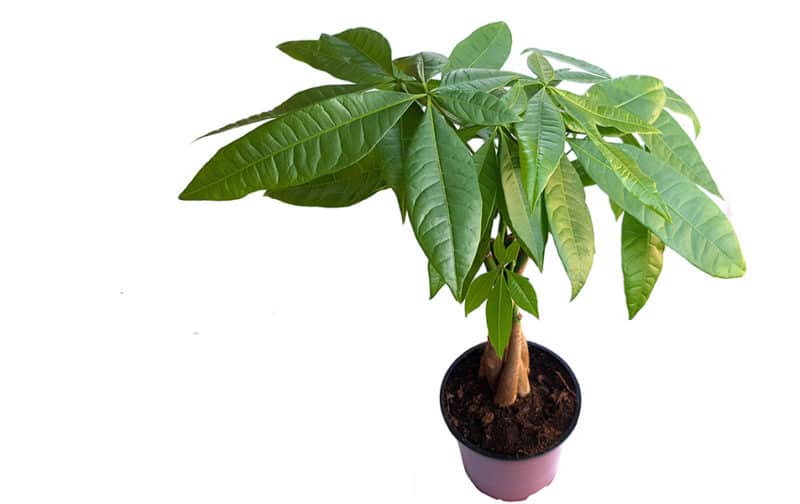
Money trees are known for being able to withstand some neglect and keep on thriving. The plant can be left in a dark corner and only watered now and then and it will still be happy.
You probably recognize this indoor tree because of its braided trunk and five-leaved stem. You can trim the tree back now and then and it will sprout new branches at the cut. Fertilize occassionally for bushier growth.
- Light: Low light. Don’t place in full sun or the leaves will scorch.
- Water: Infrequent watering needed – water only when the soil looks dry.
17. Bird of Paradise (Strelitzia nicolai)
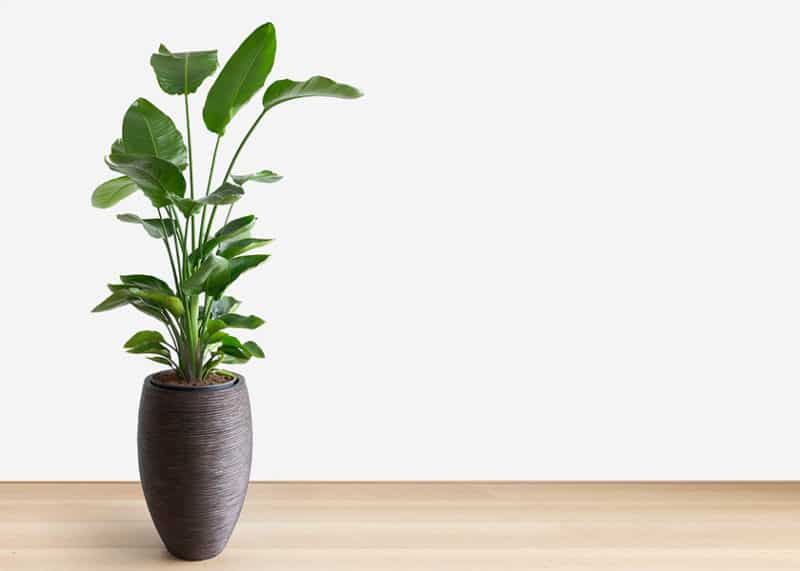
This plant is related to the banana tree, but it’s in a family of its own. It’s known for big, bold leaves and can grow about 8-feet tall indoors. Dust the massive leaves so that it can absorb plenty of light.
- Light: The more light the better, but bird of paradise will survive in lower light conditions. It prefers over 4 hours of light per day.
- Water: Keep moist but not soggy.
Take Away
Trees will make a great addition to your home. Just remember to do your research so that you provide them with the proper light and water so that they flourish. They will pay you back with abundant nature indoors.
